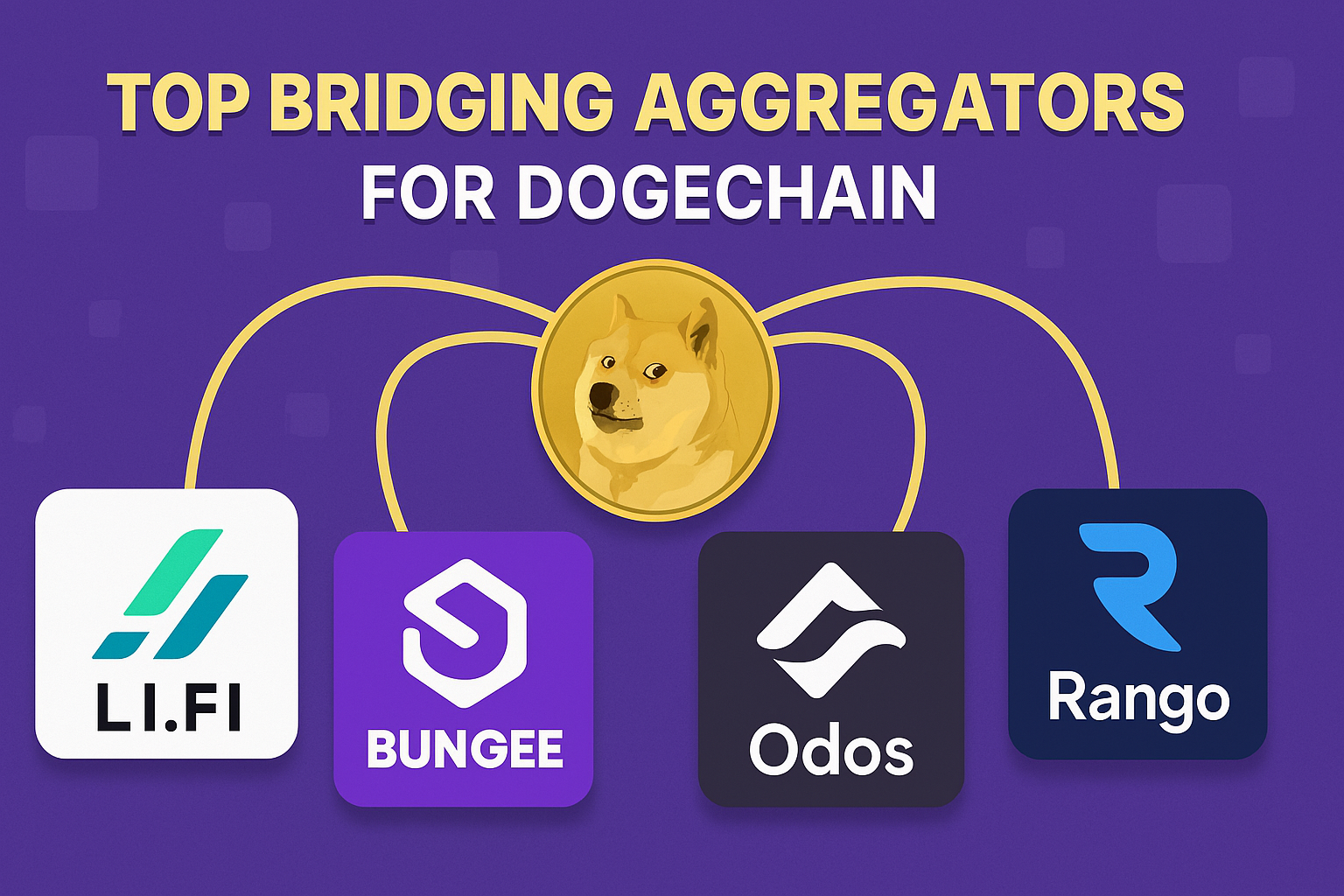I will talk about the best bridging aggregators for Doge Chain which streamline the cross-chain transfer of assets.
These systems improve interoperability of Doge Chain with other major networks done through cross-chain transfer of assets for DeFi and NFTs. For developers or traders, these aggregators facilitate transfer of assets across chains with maximum efficiency.
Key Point & Top Bridging Aggregator For Doge Chain
| Bridging Protocol | Key Point |
|---|---|
| Synapse Protocol | Supports Dogechain with seamless cross-chain swaps for stablecoins and ETH. |
| Transit Swap | Multi-chain DEX aggregator offering token swaps across major blockchains. |
| Router Nitro | Enables atomic cross-chain swaps on Dogechain using smart routing. |
| ChainPort | First to offer permissionless token bridging to Dogechain with cold wallet security. |
| Portal Token Bridge | Offers token bridges for cross-chain interoperability, supporting new L1/L2 chains. |
| Bungee.Exchange | Smart route optimizer built on Socket, supporting multi-chain bridging. |
| Jumper.Exchange | Aggregates bridges and DEXs to provide optimal cross-chain transaction routes. |
| Pangolin | DEX that supports Dogechain with cross-chain functionality via bridge integrations. |
| Orbiter Finance | Gas-efficient L2-to-L2 bridge; supports fast and low-cost transfers. |
| Celer Bridge | Scalable bridging protocol offering fast and low-cost transfers including Dogechain. |
1. Synapse Protocol
Synapse Protocol is an accepted cross-chain bridge for Dogechain, allowing transfer of assets between blockchains in a secure, fast, and low-cost manner. It accepts tokens like USDC, USDT, and WETH, letting users participate easily in Dogechain’s DeFi ecosystem.
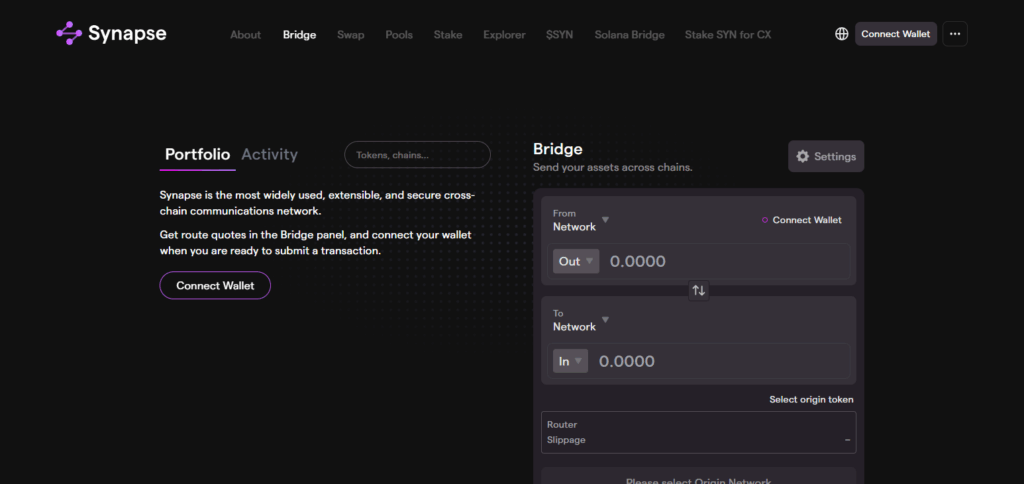
Synapse uses a balance of liquidity pools and smart contracts for trustless bridging. Its multi network assets compatibility is a vital asset for dApp developers and crypto traders.
Synapse is one of the best solutions for users wanting to bridge assets to or from Dogechain owing to their reputation for security and transparency.
Synapse Protocol – Features
- Multi-Chain Support**: Supports cross-chain transfers for multiple L1 and L2 chains including Dogechain.
- Liquidity Pools: Facilitates cross-chain swaps for USDC, USDT, WETH, and other assets using on-chain liquidity pools.
- Fast & Secure Bridging: Provides fast and secure bridging using audited smart contracts for trust minimized bridging.
2. Transit Swap
Transit Swap is a cross-chain DEX aggregator for effortless token swapping and asset bridging over Dogechain and other networks. It collects liquidity from different sources for optimal execution using smart algorithms.
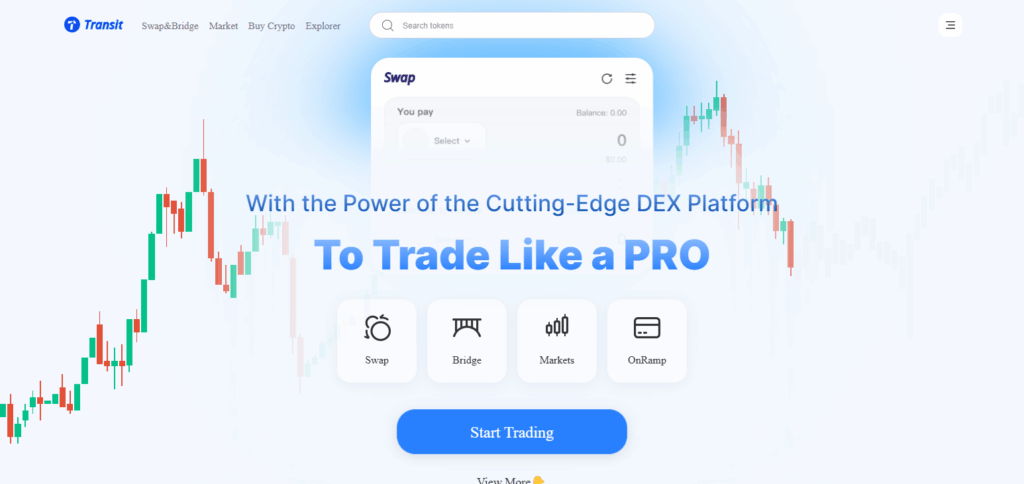
Transit Swap works with all of the important wallets and chains, supporting automated transactions for all users. Although primarily a token swap platform, incorporated solutions allow seamless bridgings as well.
Having support for Dogechain makes Transit Swap convenient for users who want to move assets into Dogechain’s ecosystem without much effort. There are no complicated procedures, making it perfect for novice and experienced traders alike.
Transit Swap – Features
- Cross-Chain Aggregation: Integrates leading DEXs for optimal trading and bridging routes.
- Wallet Compatibility: MetaMask and Trust Wallet are some of the major crypto wallets supported.
- One-Click Swaps: Token swapping and bridging processes are combined into one transaction.
3. Router Nitro
Router Nitro is an upgraded cross-chain bridging protocol of Router Protocol which connects with Dogechain to facilitate the seamless transfer of assets to and from more than 20 supported chains.

Nitro performs atomic swaps and uses smart routing to bridge quickly, securely, and at low cost. USDT, USDC, and WETH can be moved to and from Dogechain. Nitro’s focus on decentralization and real-time cross-chain swaps make it easy to use while still very powerful.
Its implementation into Dogechain increases the utility of the network by providing users with access to broader DeFi tools and advanced liquidity across many ecosystems.
Router Nitro – Features
- Atomic Cross-Chain Swaps: Facilitates cost-effective transfers of tokens to Dogechain and over 20 other blockchains.
- Smart Routing Engine: Determines the best routes for overpriced and low-speed transactions.
- Seamless UX: Users are not required to use wrapped tokens or perform manual bridging processes.
4. ChainPort
ChainPort is the first bridge that enabled permissionless token porting to Dogechain. It allows cross-chain transfers from Ethereum, BNB Chain, Polygon and Fantom into Dogechain quickly and securely.
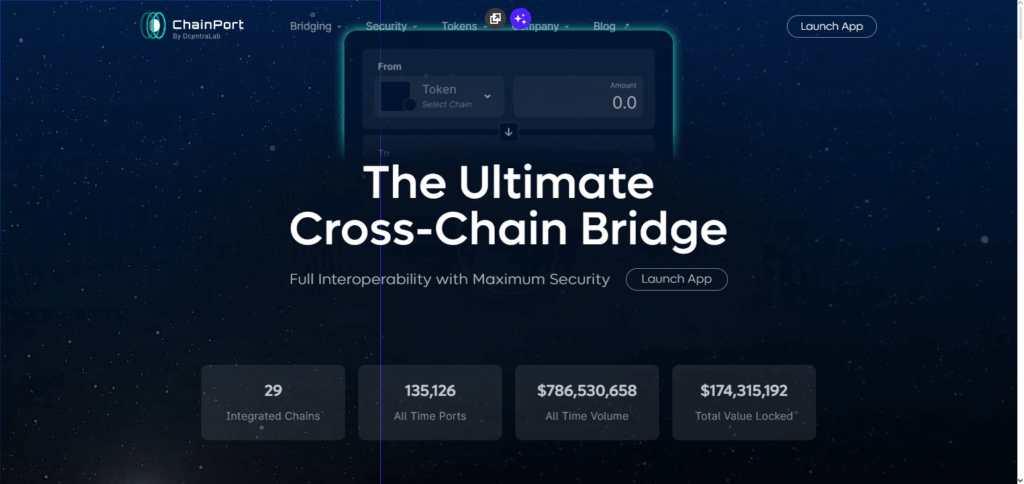
ChainPort is remarkable for its cold wallet security model where 95% of assets stored in cold wallets, thus averting exploits. Supporting many ERC-20 tokens, it facilitates easy token migration into Dogechain’s ecosystem.
Its UI is simple and fast bridging times enhance its attractiveness. It is among the top choices for users and developers seeking to safely and efficiently bring assets into the Dogechain network.
ChainPort – Features
- Cold Wallet Security: Keeps 95% of assets in cold storage to enhance security.
- Permissionless Bridging: Allows users to port tokens into Dogechain at will.
- Multi-Network Support: Bridges assets from Ethereum, BNB Chain, Polygon and many more.
5. Portal Token Bridge
Portal Token Bridge specializes in Dogechain’s cross-chain token transfers with other major blockchains. It caters to dApps and user-centric bridging. As with other bridges, security and experience takes priority.
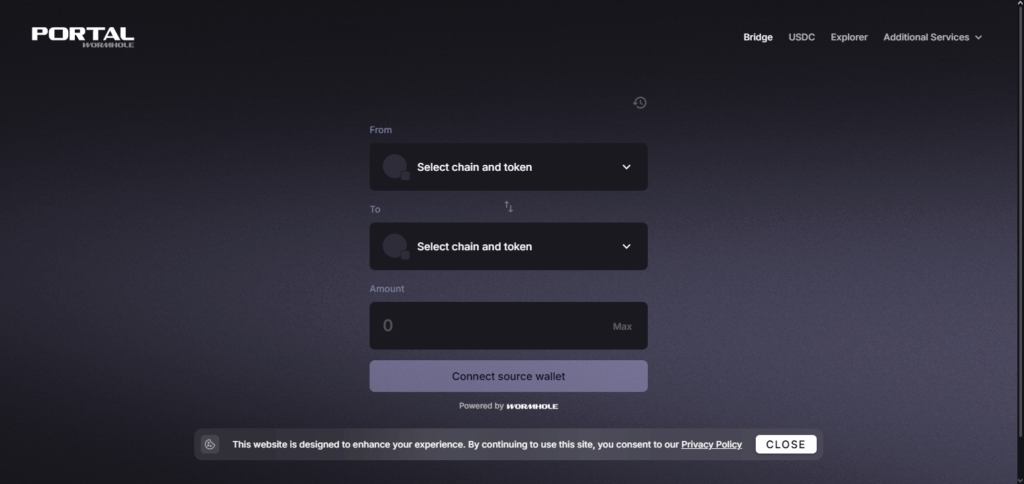
Integration of sophisticated smart contract logic ensures speed and low cost while limiting risk. Portal accommodates stablecoins, utility tokens, and other crypto assets, broadening use cases.
Its aim is to eliminate blockchains fragmentation by offering one-click transfers. With support for Dogechain, it expands access to the Dogechain ecosystem while maintaining interoperability with other DeFi and peer-to- peer trading bridges.
Portal Token Bridge – Bridges Features
- DeFi-Friendly Design: Enables quick bridging for dApps as well as for holders of tokens.
- Integration of Smart Contracts: Enables safe cross-chain operations using audited security contracts.
- Flexibility in Tokens: Stablecoins and main ERC-20 tokens are supported.
6. Bungee.Exchange
Bungee.Exchange og Dogechain er pr total bungee briser which use sockets protocols. Bungee is the only solution that groups Dogechain users liquidity and bridging options from various bridges ensuring gas, slippage, and transaction costs are optimal and transanctions a quick as possible.

Bungee offers an incredible user engagement and Provide support across many chains and tokens which means a simpler off and on boarding while accessin the wider DeFi space. Bungee is a ideal choice. for any user dogechain who wants proper brdging service while keeping crosdd siloed security system.
Bungee.Exchange – Bridges Features
- Bridge Aggregator: Uses multiple bridges to get the best routes through Socket.
- Optimization of Route: Real-time comparison for slippage, speed, and gas.
- Dogechain Support: In and out transfer of assets to Dogechain.
7. Jumper.Exchange
Another aggregator powered by Socket is Jumper.Exchange, which aims to consolidate cross chain swaps and bridging into one interface.
Along with supporting Dogechain, Jumper provides users with routes through numerous bridging DEXs and other decentralized exchanges. In real time, it analyzes speed, cost, and security to find and present the optimal bridging path.
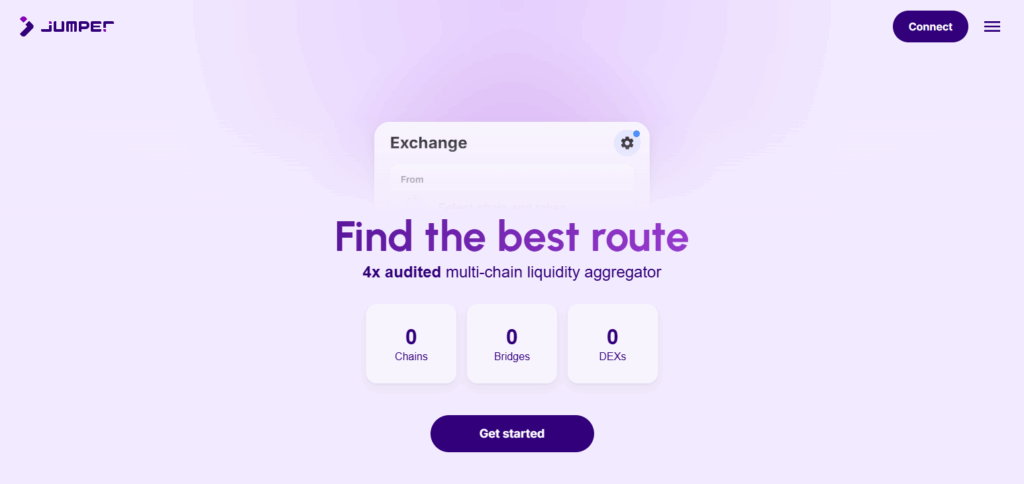
Jumper integrates with wallets, supports major tokens, and over 15 networks including some L2s and alt-L1s.
Its integration with Dogechain creates fluidity for traders and developers wishing to access or port liquidity into the Dogechain ecosystem. DeFi users greatly benefit from the platform’s simplicity and efficiency.
Jumper.Exchange – Bridges Features
- Unified Interface: Incorporates both DEX and bridge routing into a single UI.
- Bridge Comparison: Uses cost, speed, and success rate to show the best options.
- Broad Network Access: Over 15 networks, including Dogechain are supported.
8. Pangolin
Pangolin is a Dogechain supporting DEX with built-in cross-chain functionalities. It started on Avalanche chain, but now Pangolin operates on multiple chains and allows bridging of assets through third-party services.
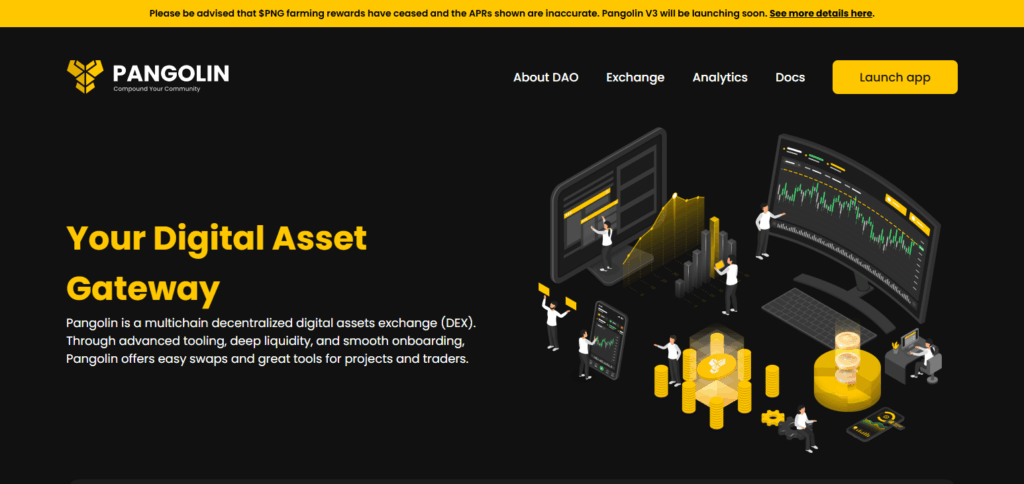
Support for Dogechain enables users to swap tokens and provide liquidity in the Dogechain ecosystem. Pangolin employs bridges and liquidity routing for cross-chain transactions. Thus, it serves as an entry DEX for users wanting to trade on Dogechain.
Its interface is user-friendly while conducting trading, staking, or liquidity farming. Alongside low fees, integration with Dogechain makes it a multi-purpose platform.
Pangolin – Bridges Features
- Cross-Chain Trading: Enables trading on Pangolin while integrating bridging protocols for Dogechain swaps.
- DEX and Liquidity Pools: Along with other chains, offers token swaps and liquidity farming on Dogechain.
- Multi-Chain Expansion: Functions on Avalanche, Dogechain, and others.
9. Orbiter Finance
Orbiter Finance is a bridge that connects Layer 2 networks with quick and cheap transfer options. Initially focused on L2s like Arbitrum and zkSync, Orbiter also includes Dogechain in its bridging activities.

It employs sender–receiver structures instead of liquidity pools to cut costs on gas fees and delay. Orbiter’s limited KYC and non-custodial dogmatic approach fit well with Dogechain’s Principles.
This bridge focuses on the quick transfer of ETH and stablecoins. With low fees and fast execution, these services will benefit users working to transfer assets into Dogechain with minimal effort and risk.
Orbiter Finance – Bridges Features
- L2-to-L2 Focus: Focused on bridging between two layer 2 networks quickly and with minimum gas fees.
- Direct Transfers: Operates on a sender-receiver basis without liquidity pools.
- Low Gas Fees: Cost-effective way of bridging ETH and stablecoins to Dogechain.
10. Celer Bridge (cBridge)
Celer’s cBridge is a Dogechain compatible crosschain transfer system. It offers fast and cheap bridging using a liquidity pool model. cBridge holds various assets like stablecoins and DeFi tokens.
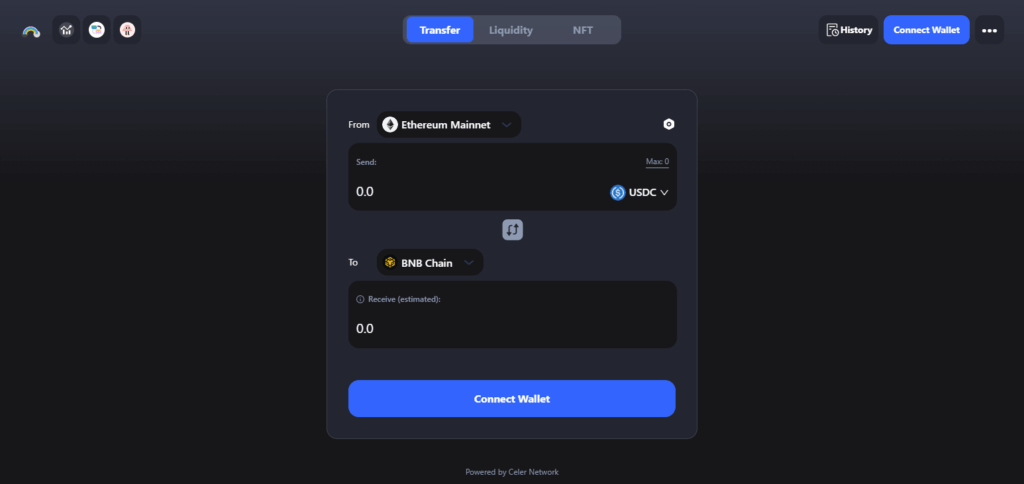
It uses Celer’s inter-chain messaging framework to guarantee compliant transfers between blockchains. Its use with Dogechain increases the usefulness of the chain by allowing easy movement of assets into and out of the chain.
It serves more than 30 blockchains and has a simple user interface. For developers and traders who need dependable access to Dogechain, Celer Bridge provides unmatched performance, security, and flexibility all in one place.
Celer Bridge (cBridge) – Features
- High-Speed Transfers: Transfers assets to Dogechain in a matter of seconds.
- Low-Cost Bridging: With there being deep liquidity support, cBridge offers a well-designed and proportional fee structure.
- Wide Chain Coverage: Over 30 networks along with the most important and used tokens are supported.
Conclusion
To sum up, Dogechain’s diverse bridging aggregators have greatly improved the integration of other blockchains into its ecosystem. One key example is Synapse Protocol which connects Dogechain to many other blockchains allowing for smoother cross-chain asset transfers and supporting several currencies including USDC, USDT, and WETH.
Also, ChainPort is known for being the first to grant permissionless token porting to Dogechain which maintains a security-first focus with cold wallet storages for most of their assets.
Moreover, Router Nitro has a distinctive approach by employing “Reverse Verification”, guaranteeing low priced and accelerated transfers throughout multi-chain blockchains wide. Jumper. Exchange agglomerates other sources of liquidity to improve cost-efficiency in swap traffic between different chains for many chains’ routers.
All these platforms work together to improve the access provided to Dogechain’s DeFi, NFT, and gaming applications, enriching the user experience.


